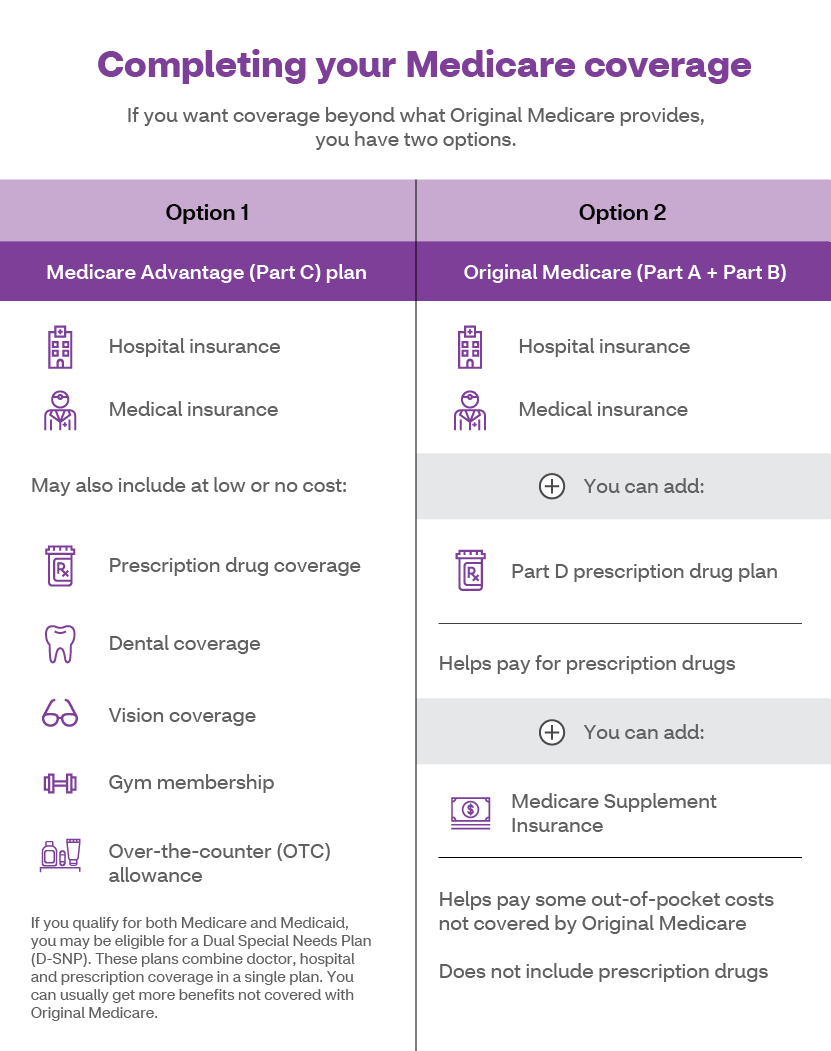How you can (and can’t) combine the different parts of Medicare

Bonnie Vengrow
Medicare is made up of different parts. To help complete your coverage, you may want to consider combining different Medicare parts. Let’s take a look at the different coverage combinations.
Part A + Part B = hospital stays and doctor’s visits
Part A and Part B, together known as Traditional Medicare, cover inpatient hospital stays (Part A) and doctor’s visits (Part B) — in other words, your essential medical care. It’s common for people to sign up for both parts at the same time if they don’t already have other coverage, such as through an employer.
Traditional Medicare allows you to seek care anywhere in the country as long as the doctor or hospital accepts Medicare. This feature is particularly convenient if you plan on traveling frequently or spending part of the year in another state. But Traditional Medicare doesn’t cover prescription drugs, most dental, vision and hearing services, membership to a gym and some other benefits.
If you want to add prescription drug coverage: Add Part D
Part D helps cover the cost of many prescribed medications as well as some preventative vaccines. Part D is available through private insurers and is sold either as a stand-alone plan or as part of a Part C plan.
If you want to add coverage for out-of-pocket costs: Add a Medicare Supplement plan
Traditional Medicare doesn’t put a limit on your yearly out-of-pocket costs, such as deductibles, copays and hospital stays. To help manage some of the out-of-pocket costs, you can purchase a Medicare Supplement Insurance policy, or “Medigap,“ from a private insurance company.
Part C = all-in-one coverage
Think of Part C (or Medicare Advantage) plans as a bundled option. Medicare Advantage plans combine the hospital and medical coverage of Medicare Parts A and B and may also include prescription drug coverage and extra benefits, such as vision, hearing or dental, wellness services and fitness. And Medicare Advantage plans limit your annual out-of-pocket costs on covered medical services. That can make it easier to plan and predict your health care expenses.
Traditional Medicare + Medicaid = hospital, doctor, prescription drug coverage and more
If you qualify for both Medicare and Medicaid, you may be eligible for a Dual Eligible Special Needs Plan, or D-SNP. These plans combine hospital, doctor and prescription drug coverage in one plan. They may also offer other benefits, such as:
- Dental, vision and hearing services
- Transportation to and from doctors’ visits
- An allowance for over-the-counter products

With its array of options, Medicare allows you to combine different parts to customize the coverage that’s right for you. To learn more about Medicare parts, go to “Unpacking the parts of Medicare: Parts A, B, C, D and Medicare Supplement plans.”